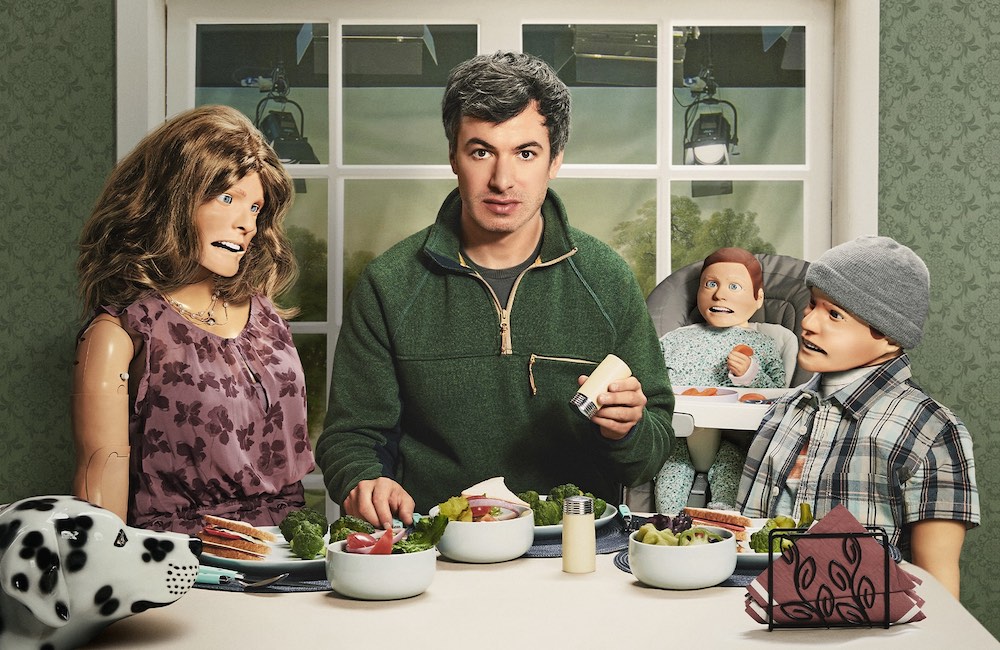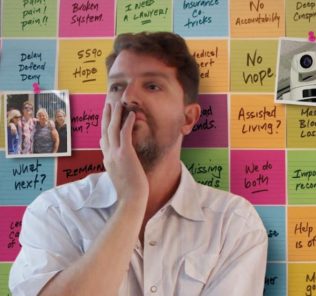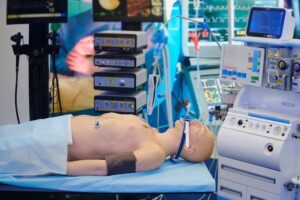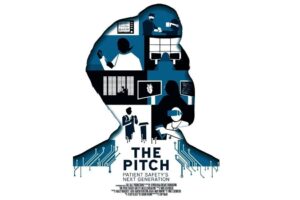HBO’s “Rehearsal” is Must-Watch TV for Healthcare Simulation Community
HBO’s new docu-comedy “Rehearsal” is the perfect summer watch for the global healthcare simulation community – flawlessly intertwining multiple captured realities into a seamless experience for us, the audience. HealthySimulation.com Founder/CEO Lance Baily, who earned his bachelor’s degree at UCSC in documentary film production, shared that “the editing in ‘Rehearsal’ weaves alternating timelines together so smoothly that it’s like watching multiple gears of a clock, working independently and yet always together.” Not only is the show amazing to watch, but it does a fantastic job demonstrating the potential of hyper-realistic simulation to the world at large. “Rehearsal” shows that simulation works and is a must-watch!
Rehearsal was created, written, directed by, and stars Canadian comedian Nathan Fielder, who also brought us “Nathan for You” in 2013. In that docu-comedy predecessor, Fielder plays a fictionalized off-kilter version of himself, trying to use his business background and life experiences to help struggling companies and people, frequently offering them outlandish strategies, parodying the methods of marketing and management consultants. In Rehearsal though, Fielder has a much more altruistic goal; to help people. As such, he goes to great lengths to create realistic simulated experiences (thanks to HBO’s financial support), complete with 3D scan replicated interiors built by Hollywood professionals, live professional actors, animated manikins, and more.
According to HBO, within the show a construction crew, a legion of actors, and seemingly unlimited resources help Fielder allow ordinary people to prepare for life’s biggest moments. This is achieved by “rehearsing” each scenario in carefully crafted simulations of his own design. Within the show’s trailer, Fielder says, “I’ve been told my personality can make people uncomfortable, but I’ve learned that if you’ve planned for every variable a happy outcome doesn’t have to be left to chance.” He shares that everything that has happened to him in the day which the trailer depicts, he has rehearsed dozens of times in a replica of the person’s home. His goal is for each rehearsal to reflect reality.
Sponsored Content:
In the first episode, “Orange Juice, No Pulp,” Fielder helps a Brooklyn-based trivia aficionado come clean to his teammate about a long-held lie. Episode two, titled “Scion,” follows him as he allows an Oregon woman to prepare for motherhood by simulating the experience of raising a child from zero to eighteen. Then, in episode three, while the woman continues to raise her “son,” Fielder goes to new lengths to help a man prepare for a difficult conversation.
Why Do Healthcare Professionals Train with Realistic Manikins?
Reflecting a tie to healthcare simulation, within this trailer the viewer can see the use of a pediatric simulator to represent the woman’s infant son. Across medical simulation, a pediatric simulator is a life-like manikin that represents the body of a child and is utilized to help educate and train healthcare professionals. Pediatric simulation manikins are known to offer features such as realistic hands, feet, fingers, and toes, soft upper body skin over a hard upper body for a realistic feel, jointed elbows, wrists, knees, and ankles, a fully articulating head and jaw with teeth and tongue and much more to increase learning outcomes.
Sponsored Content:
With such a life-like child appearance, and by offering sophisticated performance modules, pediatric manikins have sensible and practical physiology for the purpose of training in infant care. The technology provides learners with the ability to focus on a broad range of pediatric skills in order to gain exposure and practical experience with life-threatening pediatric problems.
In healthcare, pediatrics are considered a specialty of medicine and nursing due to the stark differences in clinical protocol related to the care of a child versus an adult patient. As such, clinicians should be educated and trained with human patient simulators that most closely resemble pediatric patients.
More About Role-Play as a Simulation Methodology
Role-play takes place between two or more people, who act out roles to explore a particular scenario. It is an experiential learning method designed to build first-person experience in a safe and supportive environment. Role-play is widely acknowledged as a powerful technique across multiple disciplines of training and education. Role-play is a pedagogy that has been used in a wide variety of contexts and content areas. Essentially, it is the practice of having students take on specific roles and act them out in a case-based scenario for the purpose of learning course content or understanding complex concepts.
Role-play simulation is sometimes referred to as peer simulation. And while this method of simulation may resemble Standardized/Simulated Patient (SP) simulation, there are key differences. In role-play or peer simulation, learners assume the role of the patient, as well as the role of the healthcare provider. This allows participants to explore the diversity of patient responses and gain insight into patient perspectives and motivations. These experiences promote empathy and a more patient-centered approach to care (Dalwood et al., 2020).
Role-play is designed primarily to build a first-person experience in a safe and supportive environment. Role-play is effective in achieving a broad range of learning outcomes and is able to address cognitive, affective, and psychomotor domains of learning as described in Bloom’s Taxonomy. In role-play, learners apply their knowledge to a given problem, and reflect on issues and the views of others, while considering the relevance of theoretical ideas by placing them in a real-world context (Rowson, 2019). There may be no better way to illustrate the complexity of decision-making.
The Rehearsal airs Fridays at 11 p.m. EST on HBO.
Visit the Rehearsal Show Website
Lance Baily, BA, EMT-B, is the Founder & CEO of HealthySimulation.com, which he started while serving as the Director of the Nevada System of Higher Education’s Clinical Simulation Center of Las Vegas back in 2010. Lance is also the Founder and acting Advisor to the Board of SimGHOSTS.org, the world’s only non-profit organization dedicated to supporting professionals operating healthcare simulation technologies. His co-edited Book: “Comprehensive Healthcare Simulation: Operations, Technology, and Innovative Practice” is cited as a key source for professional certification in the industry. Lance’s background also includes serving as a Simulation Technology Specialist for the LA Community College District, EMS fire fighting, Hollywood movie production, rescue diving, and global travel. He and his wife Abigail Baily, PhD live in Las Vegas, Nevada with their two amazing daughters.
Sponsored Content:


















